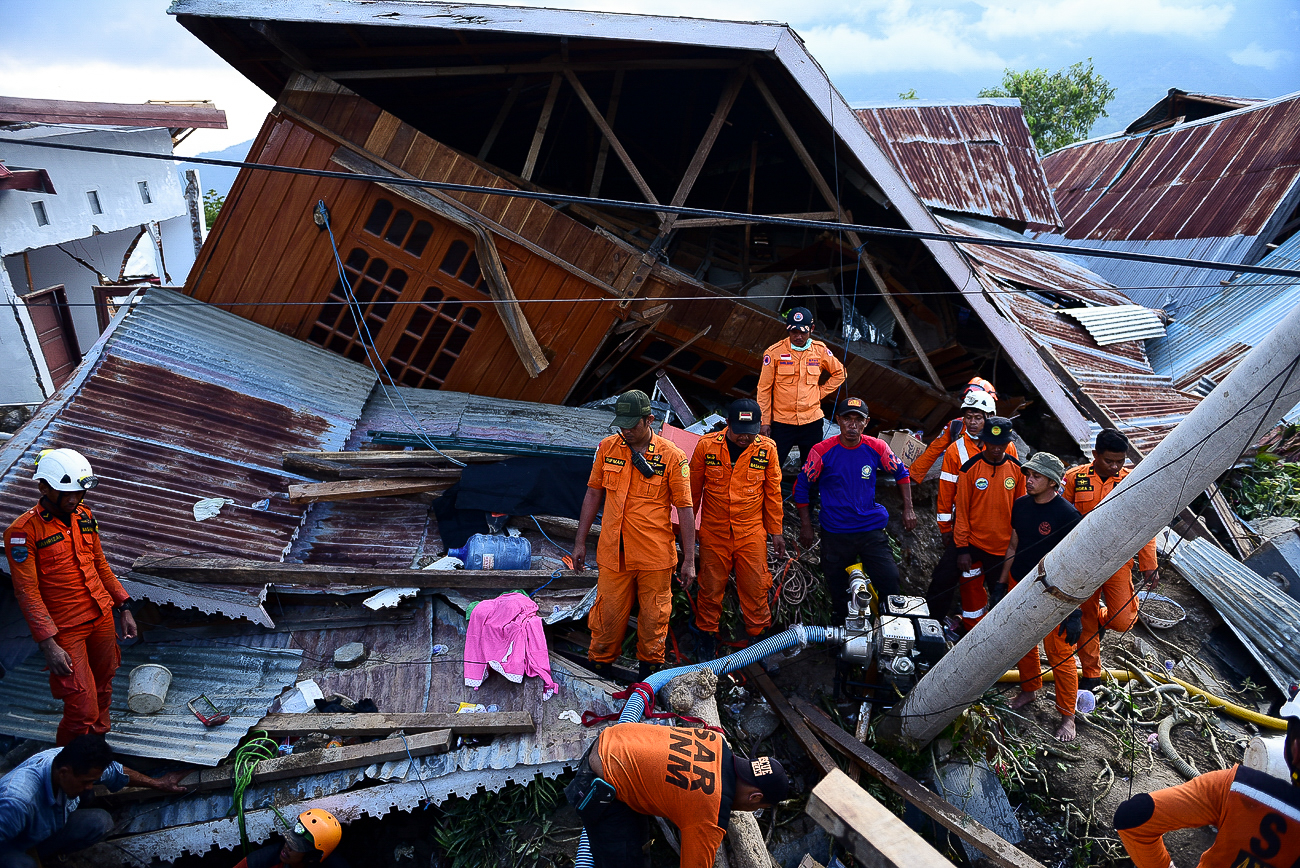A 7.5 magnitude earthquake and tsunami hit the Indonesian island of Sulawesi on Sept. 28, displacing more than 82,000 people and killing 2,045, though that number is still increasing. The coastal city of Palu was hit the hardest with 67,000 homes destroyed or damaged. Approximately 300 families disappeared overnight, with their homes and cars swallowed by four meters of mud as a result of soil liquefaction. Thousands more may still be buried beneath the earth—the number could be as high as 5,000 according to disaster agencies.
In the aftermath of the disaster, the government has allocated $37 million for disaster relief, and volunteers have come from neighboring cities. The city of Palu alone had over 10,000 rescue workers on-site.
Due to the difficult terrain and advanced stages of decomposition, the search for the missing has been called off, angering thousands of families. “On October 11, we will hold joint prayers in Balaroa, Petobo and Jono Oge to end the evacuation of bodies,” said Sutopo Purwo Nugroho, spokesman to the National Agency for Disaster Management, via Al Jazeera.
Many of the discovered remains have been left unidentified and buried in mass graves to prevent the spread of disease. “We’re Muslim. We need a proper burial, in the Islamic way,” said Hajah Ikaya in an interview with Reuters. “We don’t want this. Many of us are angry that we haven’t found our families and friends and they want to give up?”
Over 25 countries responded to President Joko Widodo after he pleaded for international assistance, however, little aid has reached the disaster zone. Desperate residents have turned to looting abandoned stores for food and water, while others salvaged anything they could sell. “We have to do this because there’s no assistance from the government,” Zaitun Rajamangili, who lost his home in the tsunami, told TIME.
Despite earlier calls for assistance, independent aid workers have also been ordered to exit the disaster zone, as reported by the Asahi Shinbun. The National Agency for Disaster Management declared in their English-language statement, “Foreign citizens who are working with foreign [non-governmental organizations] are not allowed to conduct any activity on the sites affected. Foreign NGOs who have deployed its foreign personnel are advised to retrieve their personnel immediately.”
Indonesia has a history of restricting foreign aid to protect its image in handling disasters. Just last August, after the island of Lombok suffered from a series of quakes killing 505 people, the government refused the foreign aid they were offered.
At a briefing in Jakarta, Nugroho said, “Reconstruction and rehabilitation are scheduled to start in early November.” Data and mapping of the area are being compiled to help determine a safer placement for housing. The areas affected by liquefaction will be converted into parks, sports fields and memorials. Nugroho did not comment on when the houses would be ready.
While thousands are staying in camps in Mamuju and Makassar, many survivors are living in makeshift shelters made from salvaged wood and plastic in the city and surrounding hills as they wait for assistance.
“They keep saying there’s going to be compensation, but where is it?” asked Ahmad Hidayat, a student who works in what is now a heavily damaged garage. “What are the plans? Are we going to be relocated, will there be help to move people back? There’s no certainty.”






